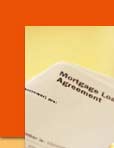










 |
 |
 |
 |
 |
 |
 |
 |
 |
 |
 | |||
The Closing Factor will help a seller who is not getting the offers that he expects. The existing home seller can now apply a technique similar to one that builders have found to be useful for years. Instead of cutting the listing price, the seller can offer the Factor as a way to lower the buyer's monthly payments. Or, he can use it as an added incentive to a much smaller cut in price. Using the Closing Factor as a negotiating tool can benefit both parties. The cost of the Factor can be determined by the seller and the terms of the Factor can be adjusted to fit the needs of the buyer regarding monthly benefit and duration.
For example, for a cost of 3 points, a seller can use the Closing Factor to lower a buyer's early-year, monthly payments by more than if he had reduced the selling price by 15%. Similarly, a cost of 2 points corresponds to a 10% or greater price reduction. The buyer receives a big break immediately, when he really needs it. The buyer is better off if the seller applies any cut in price that he’s willing to make to the purchase of the Factor.
The Closing Factor is an agreement entered into by the buyer and the seller as part of their purchase and sale agreement. The seller agrees that a small part of his proceeds from escrow will be used to reduce the buyer’s payments. The Factor can be applied to, attached to or supplement any fixed or adjustable rate mortgage. A participating lender understands how he will also benefit.
The Closing Factor is a modified, short-term interest rate buydown—essentially, an annuity that is structured to prepay a portion of the interest due in the early years of the mortgage. Conventional buydowns reduce early year monthly payments, but some are calculated in such a way that later year payments are also lower, no matter the term of the buydown. The others escrow funds in a way that limits the tax benefit to the buyer and the fee to the lender. Both types of conventional temporary buydowns wind up costing at least 4 points for what the Closing Factor yields for 3 points.
The Factor is designed to capture all of the benefit in the early years. Lower payments and all of the tax benefit. Also, the lender is assured of keeping the entire amount paid, even if the loan is refinanced or prepaid. The interactivity and the change in method make the Factor over 30% more powerful (or less expensive) than a standard, short term buydown. It is one of the features of the product which has made it patentable as a "novel business method." (Recently published as US 2005/0021453 A1).
The Standard Closing Factor yields a 1.5% cut in the buyer’s effective interest rate for three years, for 3 points. The buyer and seller could instead agree to create a Custom Closing Factor that modifies the length of time and/or rate reduction to better match the buyer’s needs. For example, the Factor can also be utilized for a step function (e.g.; 3/2/1) buydown.
Trademarks associated with the FIRE (Financial Instruments for Real Estate) family of products include FIRE, Closing Factor, Factor, Builders' Better Buydown, BBB, Bounce Back Buydown and Snap-Back Buydown.